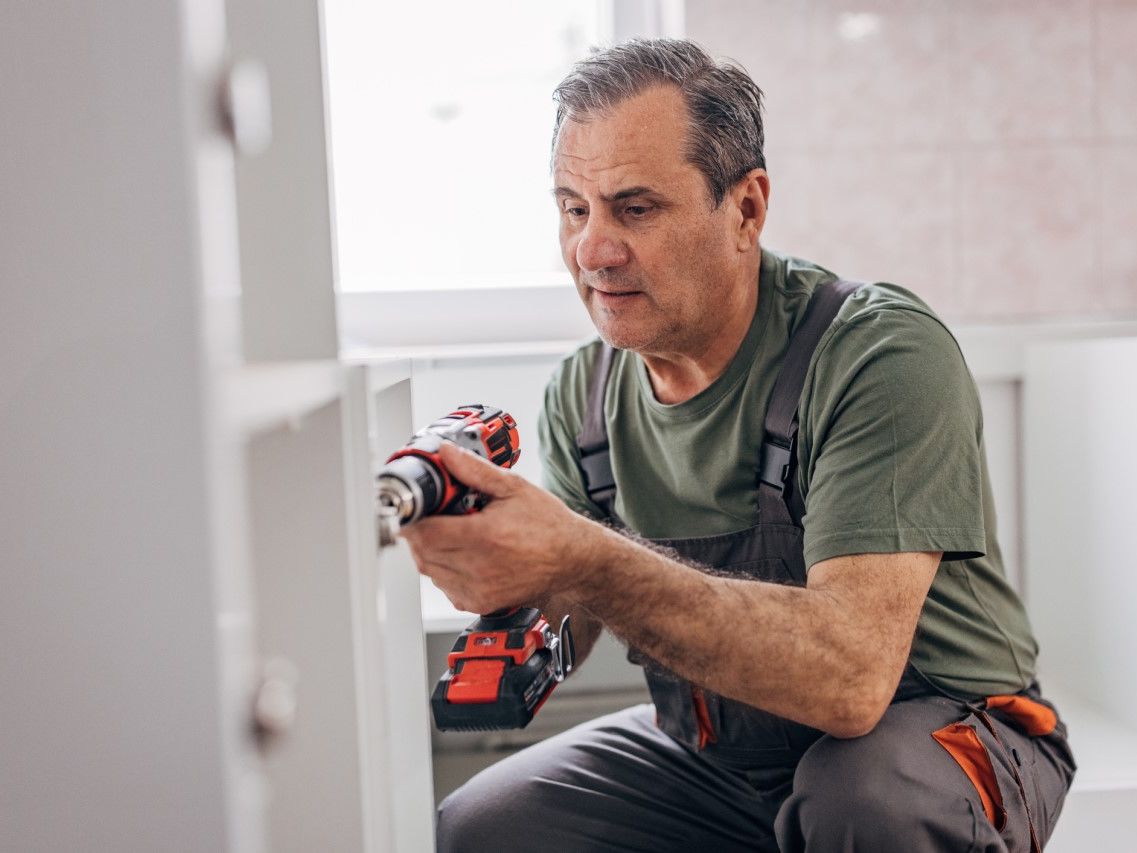Home reno tips for older Australians wanting to ‘age in place’
Older home owners may want to consider ‘universal housing design’.
Sponsored Story

Over the last 20-30 years we have seen an explosion in home renovations. With hours of watching nightly home reno shows like The Block and Grand Designs Australia, combined with the promise of higher real estate valuations, and the explosion of Bunnings stores across the country giving us ready access to all of the tools and materials we need, we have been turned into a nation of aspirational home re-designers.
Some of these home renovations are done for aesthetic reasons, but a lot of the home renovation work we do is to make our homes more functional and livable. For older Australians, such functional changes are often made to meet the challenges associated with mobility.
Universal design is a principle that products and environments should be designed so that they can be used by all people, to the greatest extent possible, without needing to be adapted or have a specialised design. The term was first coined by US architect Ron Mace, an activist who was focused on environments built for accessibility after facing barriers as a person in a wheelchair. Mace had contracted polio as a child.
Thanks to the work done by campaigners like Ron Mace and the UK’s Selwyn Goldsmith, we now see universal design principles everywhere, from curb cuts and ramps leading from the street onto footpaths, to automatic door openers, to kitchen cabinets with pull-out shelves, to on-screen TV captions.
Similar design functions are being incorporated into housing.
When considering universal housing design, this is usually done at the initial design of a home. But the general principles of universal housing design can be applied – especially when a renovation gets more complicated to the point of adding extensions to home or completely rebuilding rooms in a home.
When we talk about home renovations, there is always a huge focus on the kitchen. This is also the part of the house where the most can be done for older people to ensure they are able to get the most out of their living space as they ‘age in place’.
For the kitchen, you might want to consider:
- Pull-out cabinetry – It is often difficult to reach the back of cupboards, even for the most able-bodied people. Slide-out shelves, lazy Susans, and other shelves and drawers that can be pulled out can make a huge difference to access those hard-to-reach pots and pans.
- Island tables – Tables situated in the middle of a kitchen that have just legs and not built-in cabinets underneath provides great ‘roll-up’ access for those in wheelchairs or using other mobility devices.
- Bright lighting – A well-lit kitchen helps with food prep, while in-cabinet lighting makes it easier to see labels and handles.
- Non-skid flooring – This has obvious safety benefits.
- Taps with levers – Using a lever to control water flow is easier than taps, which some people can find hard to grip.
Physically, bathrooms and toilets require a lot of us. In bathrooms we are often moving around in a space that can be covered in water - the potential for a slip is a concern for people of all ages. And the bathroom requires us to stand from seated positions in rooms that are often too small and narrow for those of us needing greater mobility access. Add to that the embarrassment factor of having a fall or other incident in a bathroom or toilet - it is not where one wants to be found at their most exposed.
You may wish to consider:
- Toilet seats at a ‘comfort-height’ – You want a toilet that a person can transfer themselves to directly from a wheelchair.
- Wall-hung-toilets – While not commonplace, if a toilet is connected to the wall, rather than the floor, it makes cleaning the room easier.
- Bars and rails – Sturdy bars for users to grip onto as they access a toilet or steady themselves in a shower are increasingly common and are often coordinated with the aesthetics of bathrooms.
We now live in the era of the smart home. You can leave the house right now to visit your local JB HiFi or Bunnings and find a very broad range of consumer-focused products that can connect to your home internet and bring internet functionality to everyday home items. This can include your indoor and outdoor lights, fans, security systems, and all manner of other electrical items.
These smart home products can be used with an app on your phone to control turning them on and off, along with adjusting other functions they may have. But many of these will also connect to Google Home and Amazon Alexa speakers, which give you the ability to turn them on and off.
They are a huge benefit to the spirit of universal design, making it easy for anyone to operate these devices with ease – to be able to turn on lights without getting out of a chair is a gamechanger for those with mobility concerns.
Where you may need to consider them in home renovation is with how you power the products. If you are using speakers like Google Home or Alexa, you may need to consider the safety ramifications of adding electrical products that are always on in spaces like kitchens and bathrooms where they may be impacted by water. As part of a renovation, you might want to think about this technology and consider ways that you can position them in safe and secure places.
If you are looking to make an investment into a home renovation that will improve your quality of life, Household Capital and Home Equity can provide you with the ability to invest in your home. They specialise in purposeful renovations that will make your home liveable for longer.
Home Equity will consult, design, estimate, and renovate your home using their funds. Once the job is completed to expectations, Household Capital will pay Home Equity as the financier. You, as the client, then pay nothing until your property is sold, at which point the cost of your home improvements is deducted from your property's value (equity).
You can find out more about Home Equity by calling 1300 059 020 or visiting the Home Equity website.
All insights and information provided should be considered general advice for educational purposes only. As we are unaware of your personal circumstances, the information in this article should not be misconstrued as personalised financial advice. We recommend seeking advice from a qualified financial professional before making any major financial decisions.








